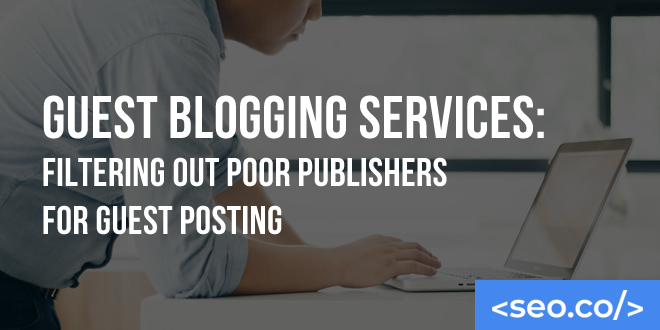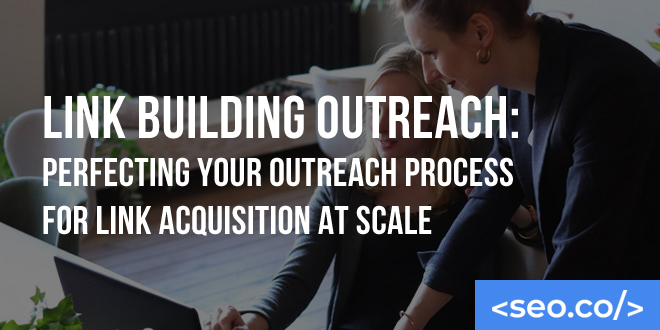
Guest Blogging Services: How to Assess the Quality of Guest Post Services
Link building for SEO remains a solid long-term strategy for growing search engine rankings and increasing online exposure. Whether via manual link building (e.g. HARO or broken link building), guest posting services or guest blogger outreach services, dozens of link building strategies abound. But how to build backlinks with guest posts that won’t elicit the ire of Google STILL remains a topic of perpetual debate. As it should. Guest blogging services are not what they used to be. Quality matters more than quantity and when a single link in your backlink portfolio can create Google penalties, you should take stock of your current guest blogging strategies to make sure they are in-line with today’s best practices. What worked as white hat only a few months ago, may now be considered a black hat tactic. This is more true with penalizing Google updates like SpamBrain and the Helpful Content Update. In this article, we will discuss how to find guest blogging opportunities for quality, avoiding low quality publishers and guest posting services that are blatantly associated with private blog networks. Spreadsheet Assessment Outline for Guest Posting Services When assessing these various guest posting service metrics, we typically run them in a spreadsheet that has a header tab that might look something like this: The spreadsheet header row includes: Site name Domain Authority (DA) score (per Moz) Domain Rating (DR) score (per Ahrefs) Ahrefs traffic Server IP Trust Flow (per Majestic) of the root domain Citation Flow (per Majestic) of the root domain Site niche Total backlinks (Moz, Ahrefs, SEMRush) SEMrush rank Alexa rank Moz quality score Moz spam score Percentage of quality backlinks Total # of indexed URLs Creating something like this in your own guest posting service and link building outreach campaign assessment is no longer an option, it’s vital. If you want a walk-through on assessing the quality of a guest posting service, we have created the following video, which should be helpful. Now, let’s dig into the metrics for qualifying your guest posting services! What is the Guest Post Site’s Moz Domain Authority, Ahrefs Domain Rating? Both Moz and Ahrefs have their own proprietary metric to assess the authority of a given URL/page and a website overall. This gauge is done by taking into account the totality of the site’s linkgraph, judging how the site looks relative to other sites based on the quantity and quality post links pointing to the site. Both gauges are logarithmic, meaning a 1x jump in “authority” or “rating” equates to a 10x jump in quality. Similar to Google’s old system of Pagerank, the Domain Authority/Domain Rating of a website can help provide with an initial gauge of the quality of the site and help you determine 1) the value of a backlink from the site and 2) how much effort should be expended in acquiring a link. However, when making assessments for guest posting services, it’s important not to become too fixated on third party metrics. These are both good gauges, but they’re certainly not perfect by any means. Even Google itself reiterates the need to be wary of third-party metrics. What is the Guest Posting Site’s Moz Spam Score? Similar to Moz Domain Authority, the Moz Spam Score.. …represents the percentage of sites with similar features to the site you’re researching which we’ve found to be penalized or banned by Google. Spam Score is based on our machine learning model which identified 27 common features among the millions of banned or penalized sites in the data we fed it. Bear in mind, the Moz Spam Score is also wildly imperfect. We have noticed that sites with non-dotcom (.com) TLDs are weighted unnaturally poorly via the Spam Score, without any guest post links to them. Just use it as a gauge, but not necessarily THE gauge of whether a site is worthy of guest posts nor is it a definitive one. If a high Spam Score is present, but not other factors point to negativity, we have no problem using the site in your guest posting services. It is, after all, a third party metric. What is the Citation Flow and Trust Flow of the Guest Posting Site? Majestic publishes two metrics that can help you gauge how natural a given link profile might look relative to other sites of similar age and in similar niches. Not only are solid Trust Flow and Citation Flow numbers helpful, but comparing the two with one another can provide further detail on the quality of the site in which you’re considering adding to your guest posting repertoire. Majestic has a great piece outlining how to read and interpret trust flow and citation flow for sites that accept guest posts. Essentially, these metrics help determine how naturally distributed a guest posting service site’s links might look. Similar to Domain Authority and Page Authority, Trust Flow and Citation Flow measure both the authority and trust of a given site based on the site’s backlink profile. We have discussed natural vs. unnatural link profiles in depth before, but mostly for assessing your own website and cleaning up spammy links. But, the Moz link graph can also help you tell whether a given guest posting service has a naturally distributed link profile. We suggest a full assessment of the trustworthiness of a potential guest posting service would include a look into Majestic’s Trust Flow & Citation Flow as well as Moz’s link graph to see how natural a given publisher’s link profile appears. Does the Guest Posting Service Include Relevant Blogs or are the Sites Generic? There are several types of guest post websites from which you can attempt to acquire links. Here are just a few, in order of decreasing difficulty: High authority, corporate sites Low authority, corporate sites High authority, niche-specific blogs Low authority, niche-specific blogs High authority, generic blogs Low authority, generic blogs We always tend to avoid guest posting services that include websites that fall into the last two bullet points listed above. These types of guest







